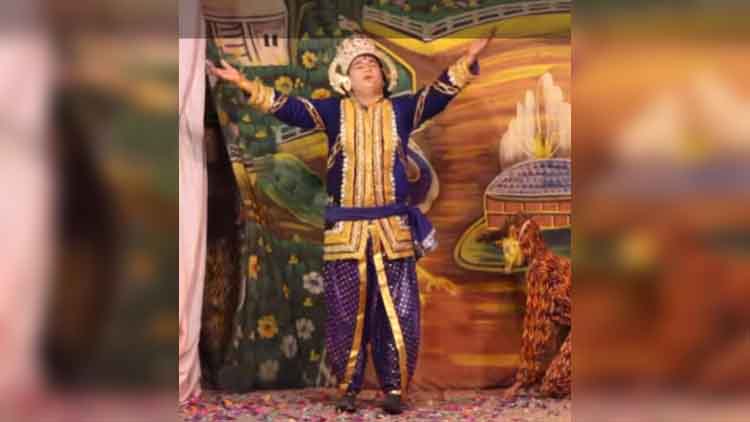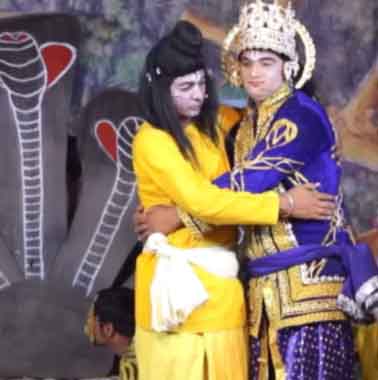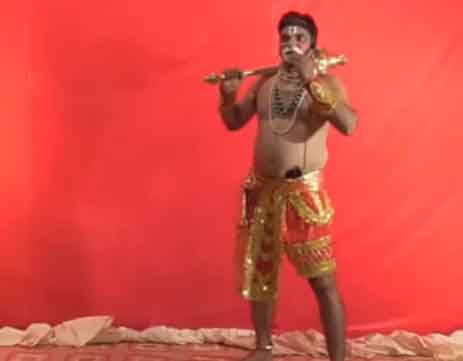Sandesh Tiwari/Jalaun
Among the thousands of Ramlilas held across India during the Navratri, the one held in Kuthound in the Jalaun district of Uttar Pradesh is unique in the sense that it’s staged in actual locations with equal participation of Hindus and Muslims.
Another interesting fact of this Ramleela is that all the men playing various characters from the epic Ramayana have to live away from their families, together as a community, observing a set of rules and a lifestyle that goes with the sanctity of the play.
The inclusiveness of the Ramlila in this town is a given fact. For example, in the ongoing Ramlila, Zia is playing the character of Bharat, the youngest brother of Lord Rama, while Shabbir is cast in the role of Angad, son of King Bali, who lends his Army to Rama against Ravana and Kamil plays the role of King Dashrath, the father of Rama.
There is no tradition of inviting outsiders to play the characters nor do the participants - organizers, artisans, or artists - seek any emoluments for their services. Even the Muslim artisans who make the tall effigies of Ravana, Meghnadh, and Kumbhkarna for burning on Dussehra, never seek their wages. They are also in charge of making the big bow and arrows for Rama and Lakshman to shoot at the effigies for setting these on fire on Dussehra.
The Ramlila of Jalaun here has entered its 183rd year and it's why United Nations Educational, Scientific and Cultural Organisation, UNESCO, is taking interest in it.
Earlier, instead of a fixed place like a stage, the entire drama was conducted on prefixed locations as per the context of the story - it could be the local temple, a lakeside, or even a riverbank. The community has since built a Ramlila Bhawan in 1957 where some parts are staged.
However, even after this the scenes that have outdoor locations as focal points like Rama's journey across the Saryu river with his wife Sita and brother Lakshman; the war between Ravana who is fleeing with Sita and bird Jatayu and the chase given by Ram and Lakshman to Marich, a deer who is a mirage to take the brothers away from Sita are all staged in the real surroundings.
Ram, Sita, and Lakshman crossing the Saryu take place on the historic Sagar pond. A boat is duly put in the pond, on which Ram, Sita, Lakshmana are seated and a boatman takes them across to their 14-year exile in the jungles.
The slaughter of Marich and the Ravana-Jatayu war is played in the Garhi grounds.
The tradition of making it look real can best be seen in the scene wherein Marich, a golden deer casts a spell on Sita and she asks her husband to get it for her. A 10-feet effigy of a golden deer runs in the field. The locals are pulling the deers from a distance not seen to the audience.
Similar efforts go into staging the scene of the first fight between Ravana and Jatayu. Two teams of people are both pulling the chariot of Ravana and Jatayu from hidden locations so that they are seen as moving at the same speed. These scenes are so fascinating and are continued for more than usual Ramleela’s do.
The Dussehra with Rama setting fire to the tall effigies of Ravana, Kumbhkarna, and Meghnad takes place in the field of Dhanutal.
Likewise, the war scenes and Dussehra take place in the open. The Ramlila of Jalaun has since been held under a project sponsored by UNESCO.
While many important characters are played by Muslims, they too stay with others all the days it goes into staging this show. They remain detached from the family under the protection of Ramlila Samiti during this period.
The funds for this Ramleela are generated through donations by the local people. The locals make a voluntary offering during the ritual of Aarti in which both Muslims and Hindus take part and the money collected goes into meeting the expenses of the cultural show.
The Muslims who play the key characters in Ramnleela have inherited this position. Their ancestors of Zia, Shabir, and Kamil, and others who had played their part in the continuation of Ramleela are held in reverence by people and received awards many times.
Interestingly, while Ramleela is staged for nine-day and on the tenth day falls the festival of Dussehra elsewhere, here it’s a ten-day festival. The day of Dussehra involved the staging of war scenes in which the demon King Ravana is killed by Ram.
Out of the 24 pictures of Ramlila of Kuthound featured in the calendar of UP Music Society eight were Muslim artists.
In this era of entertainment is confined to watching the drawing-room experiences, it is a big deal to keep the tradition of Kuthound's Ramleela remains intact.
Locals associated with it like Shyama Prasad, Ismail Khan, Asad Khan say if systematic efforts are made, the Ramleela of Kuthound can be on the map of international tourists.



